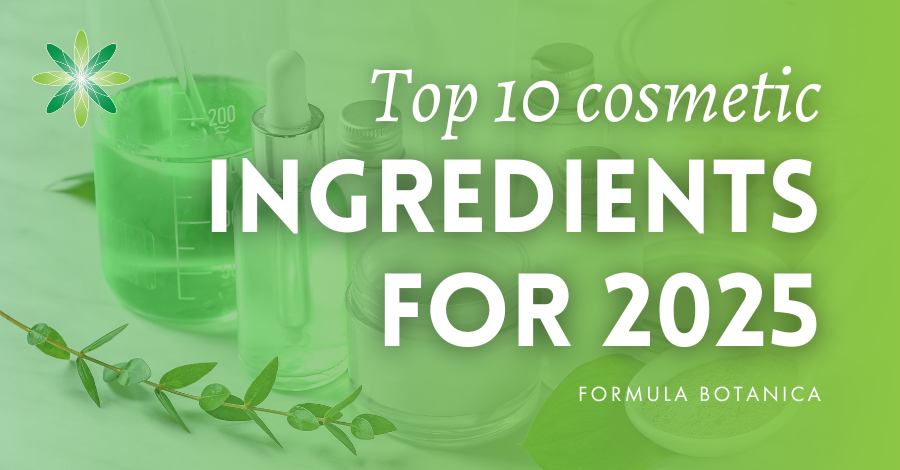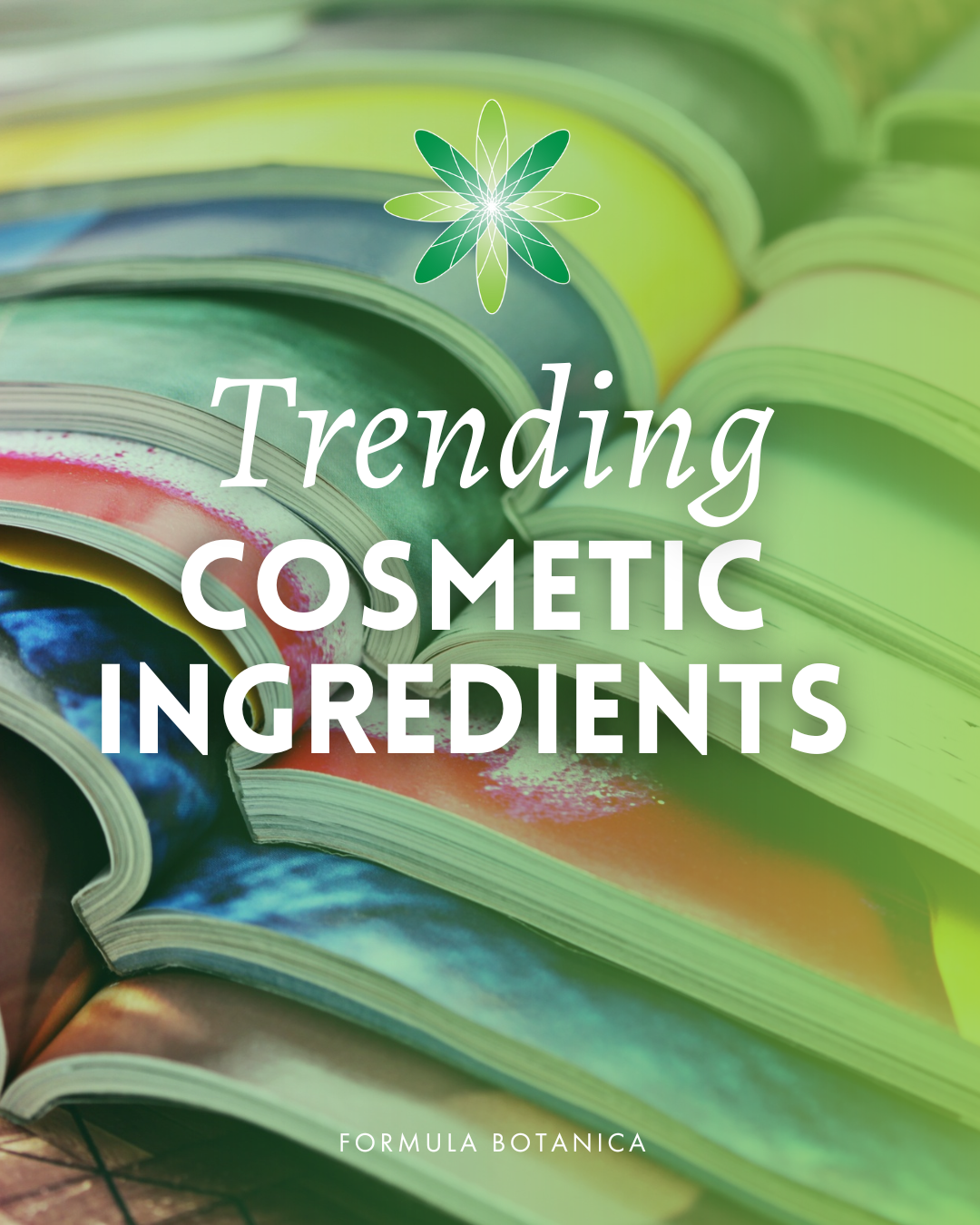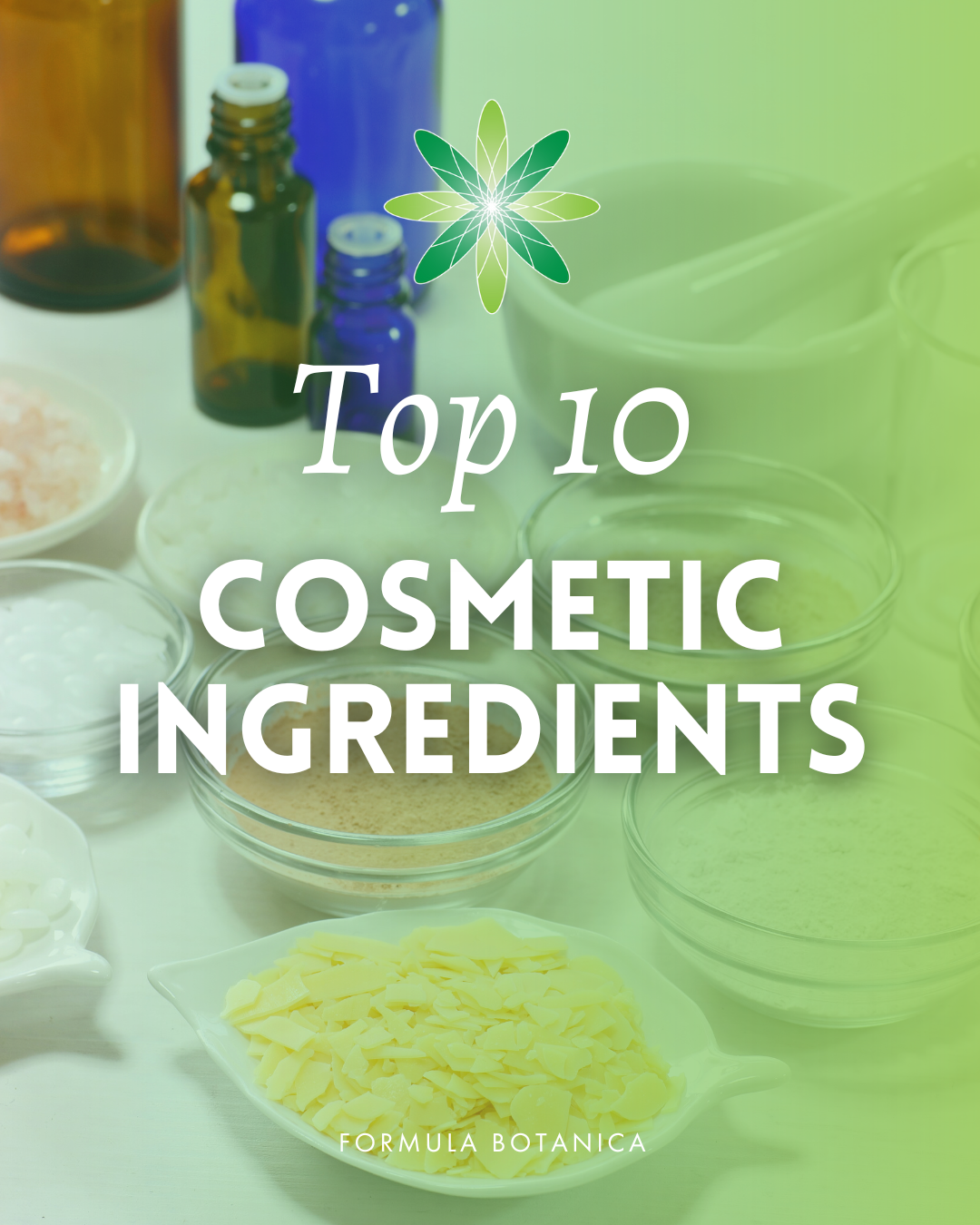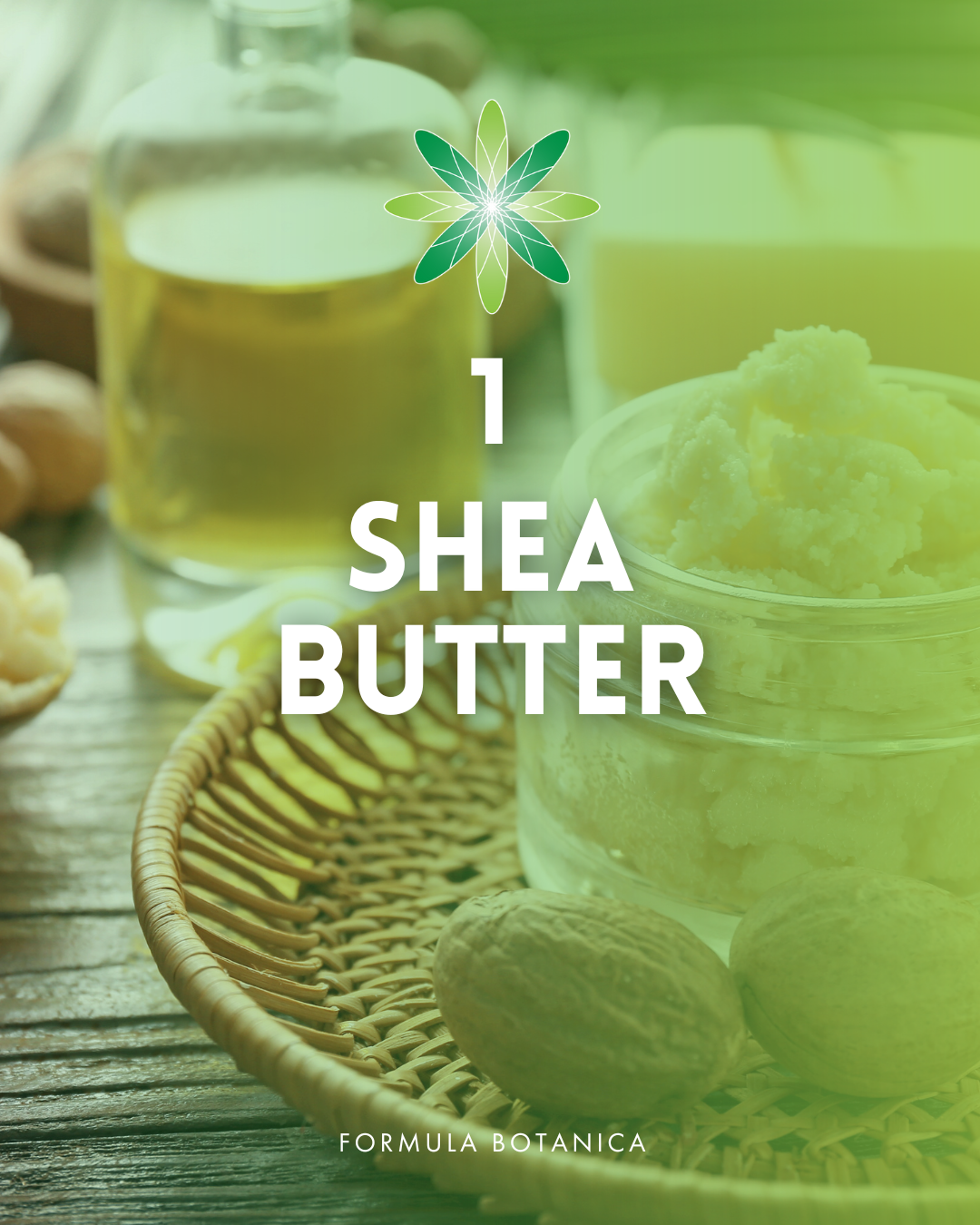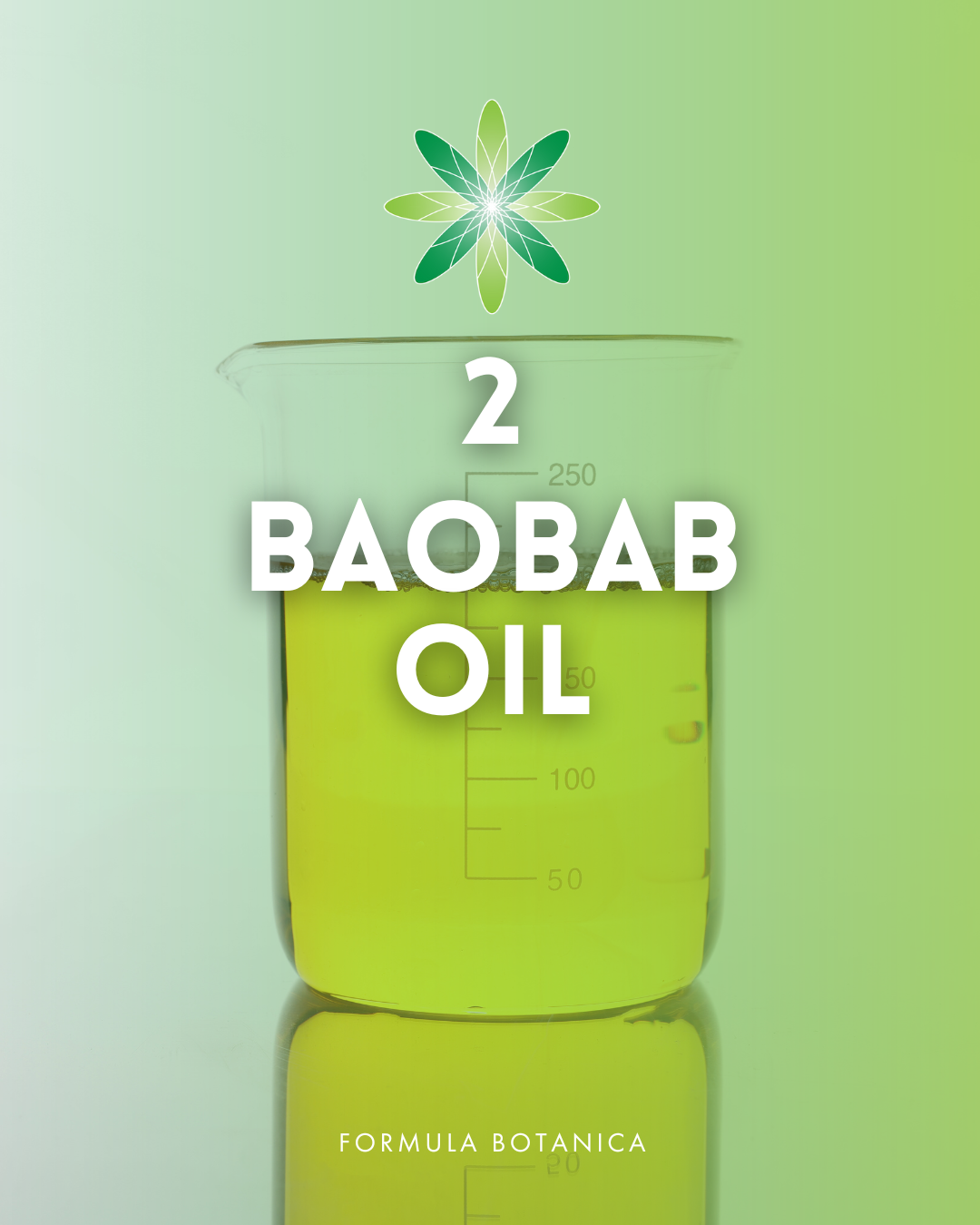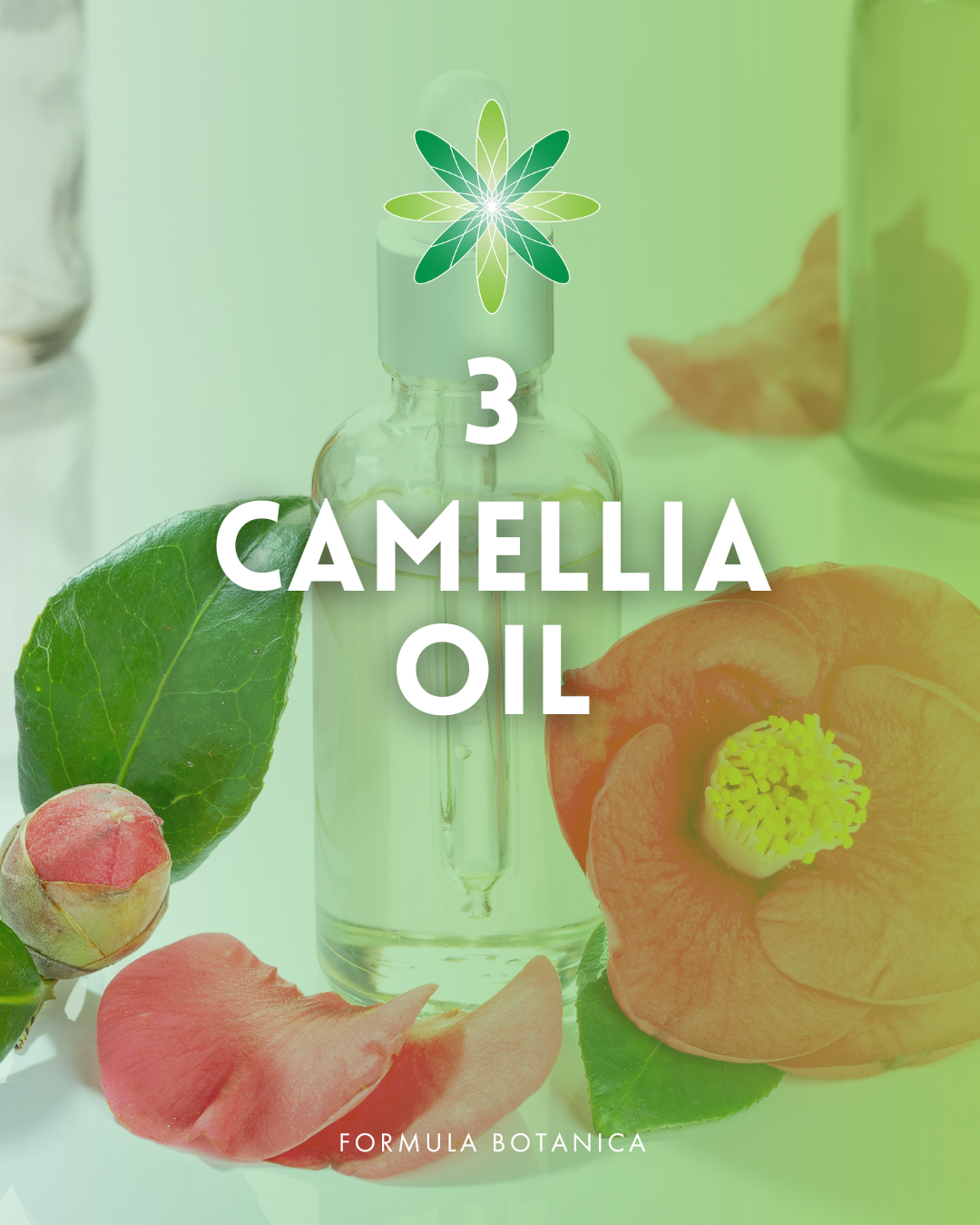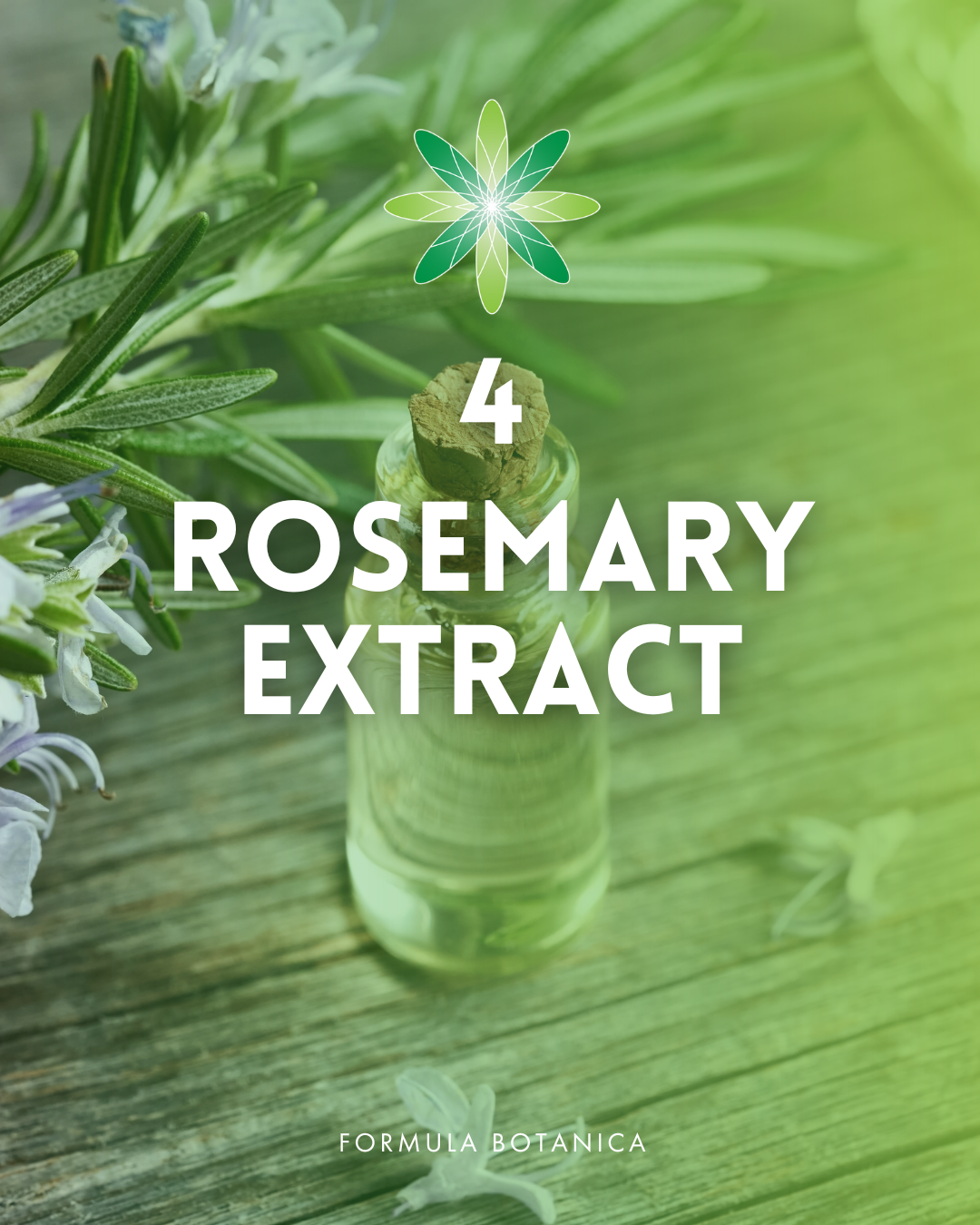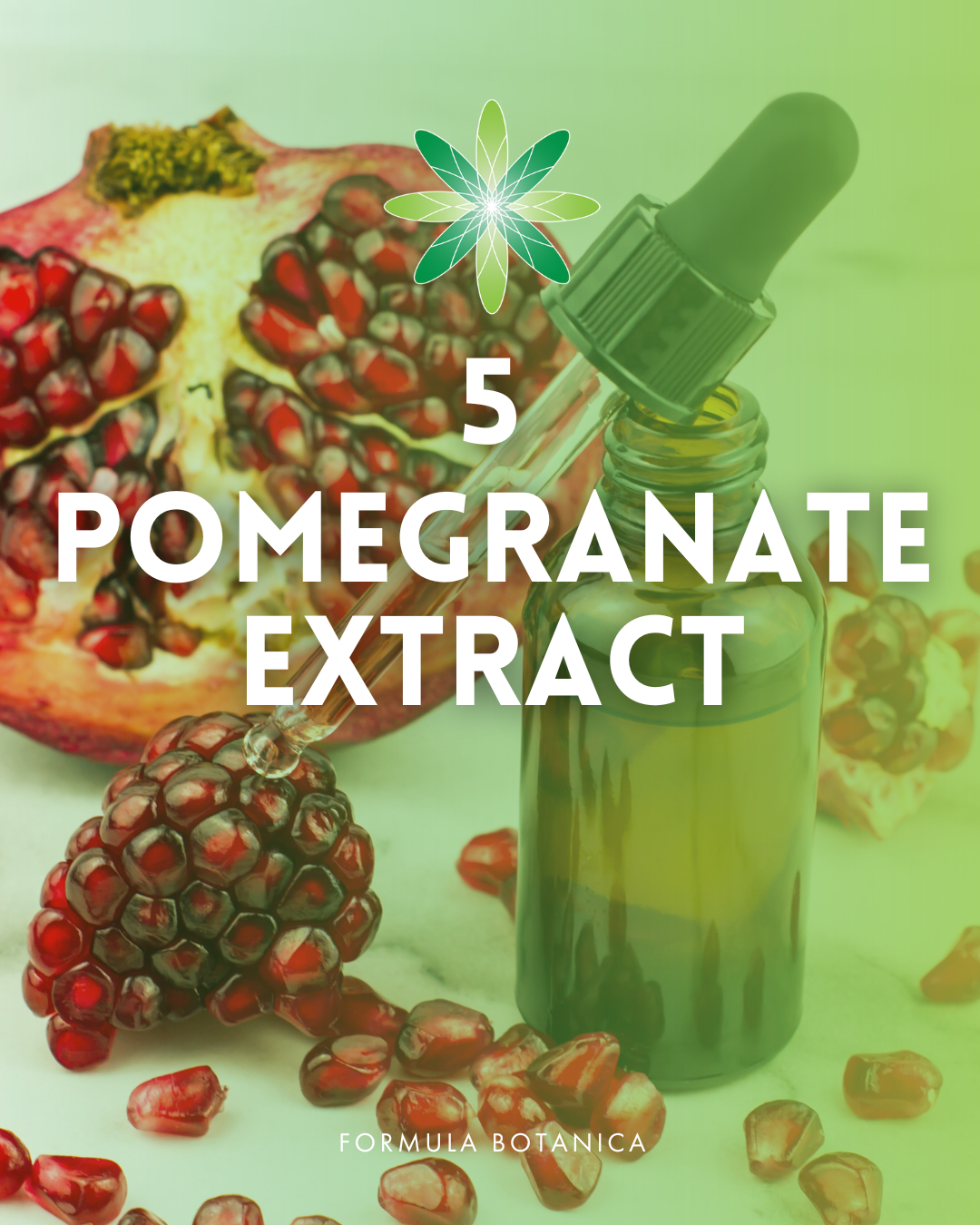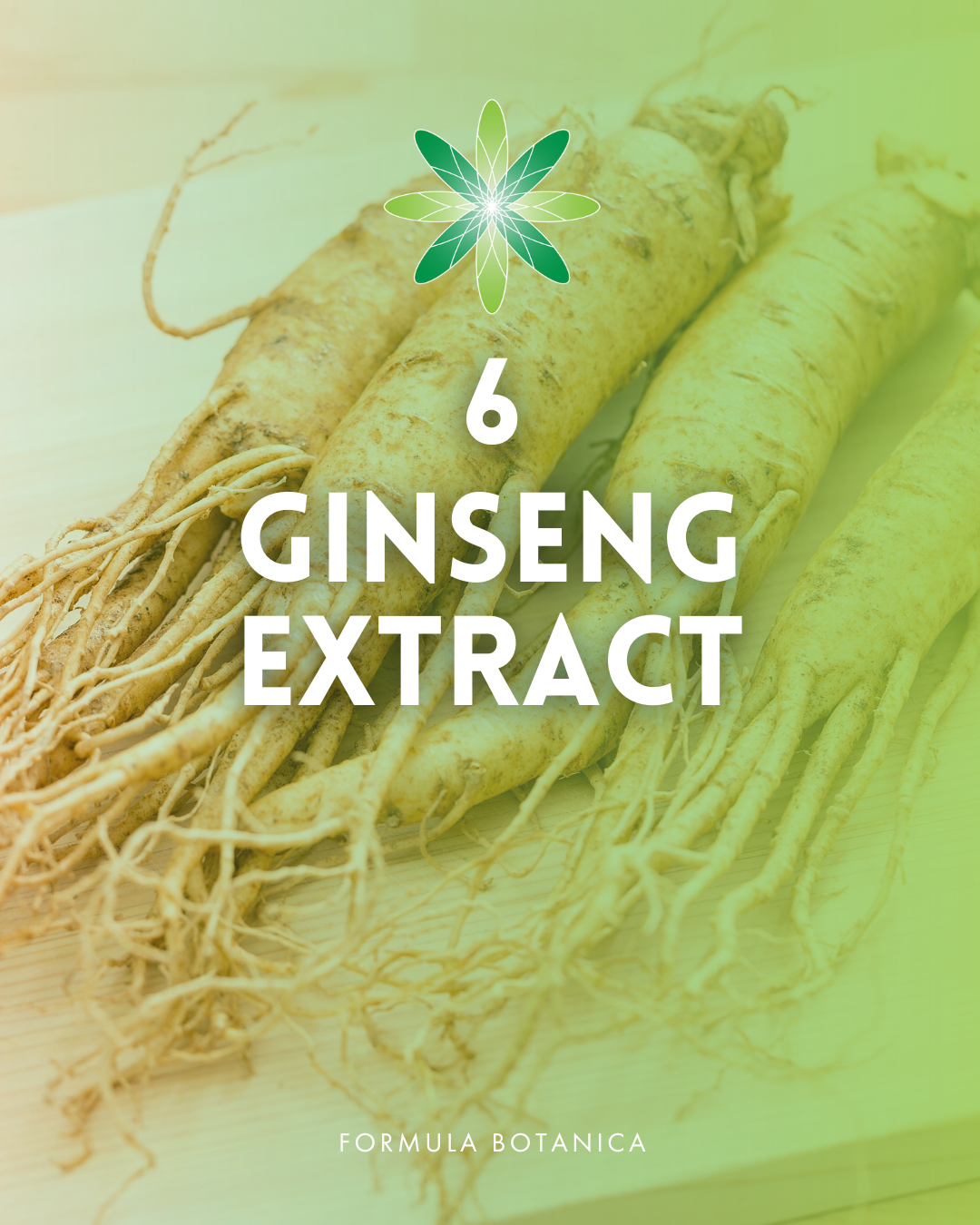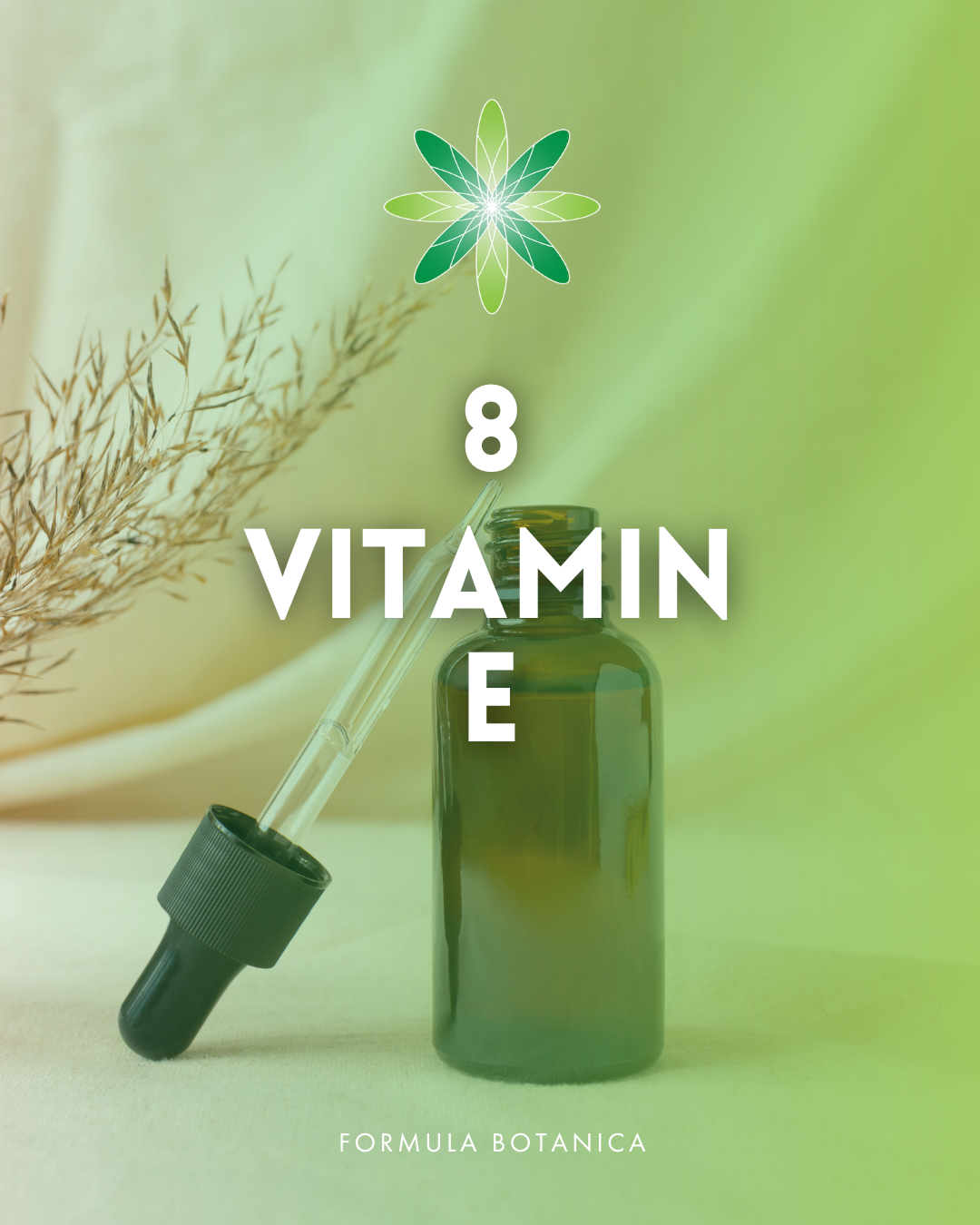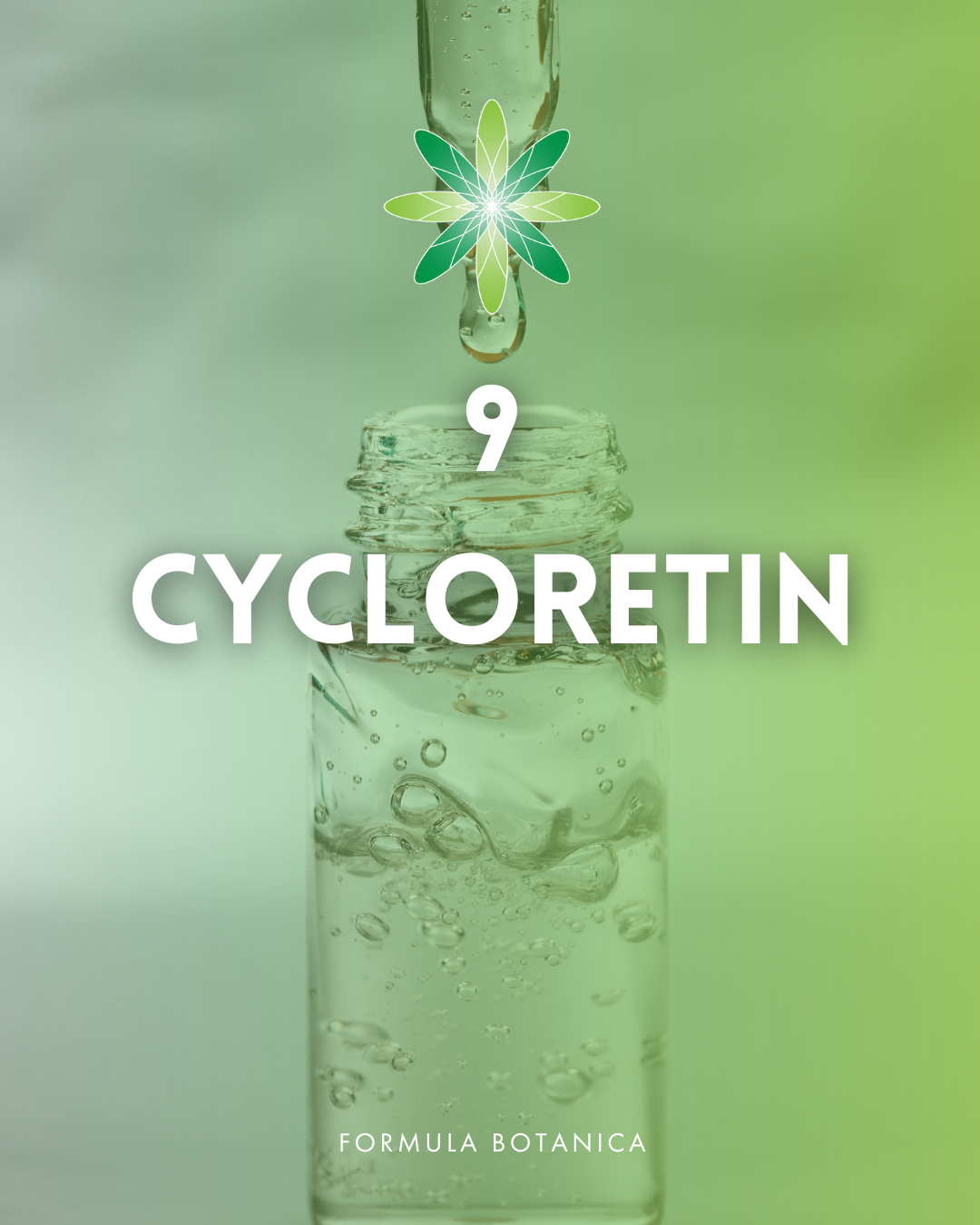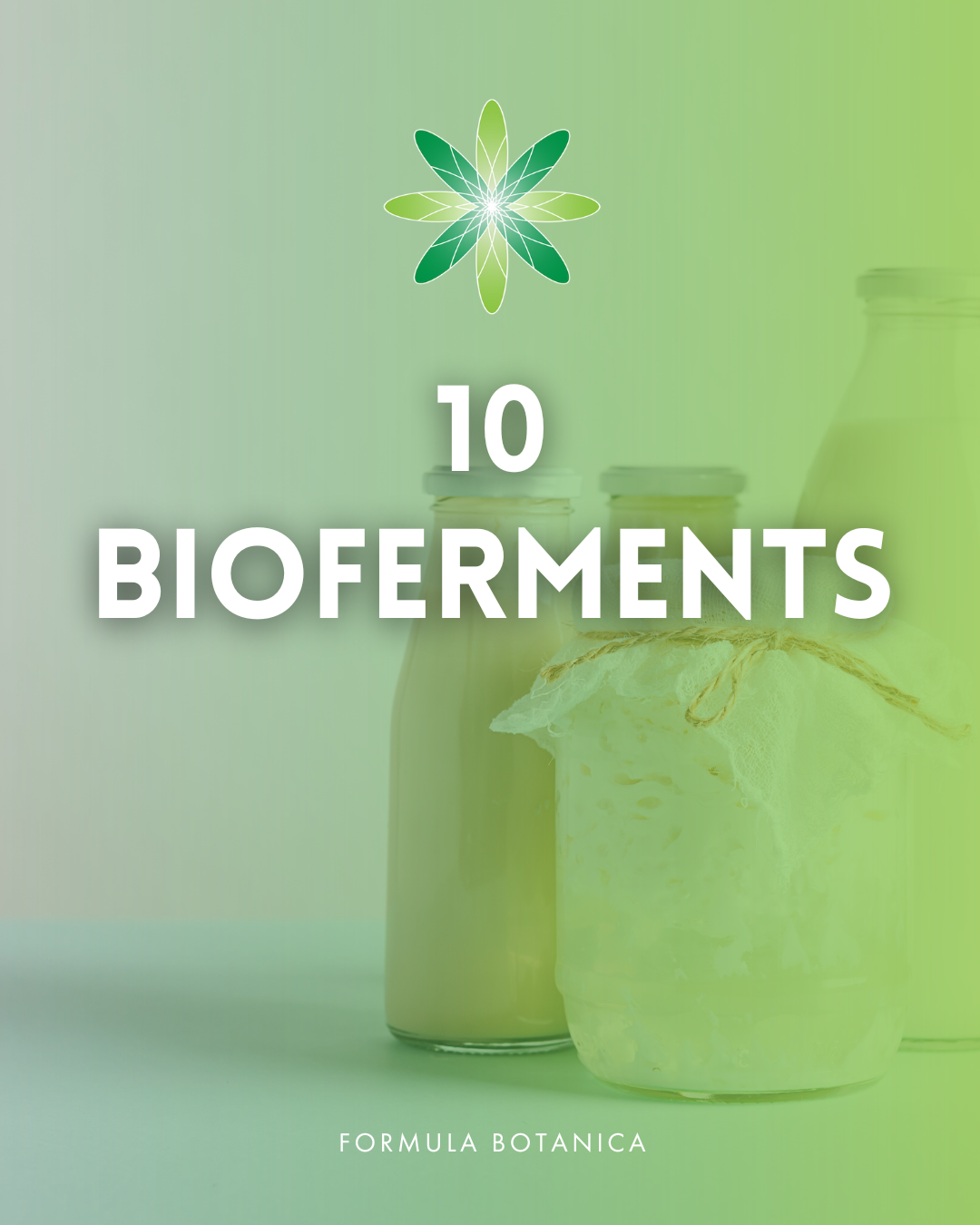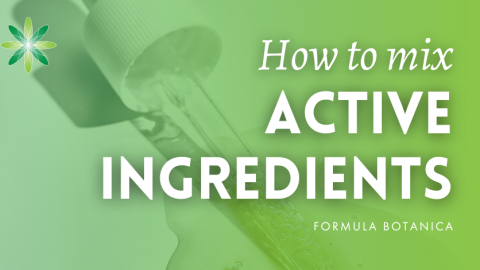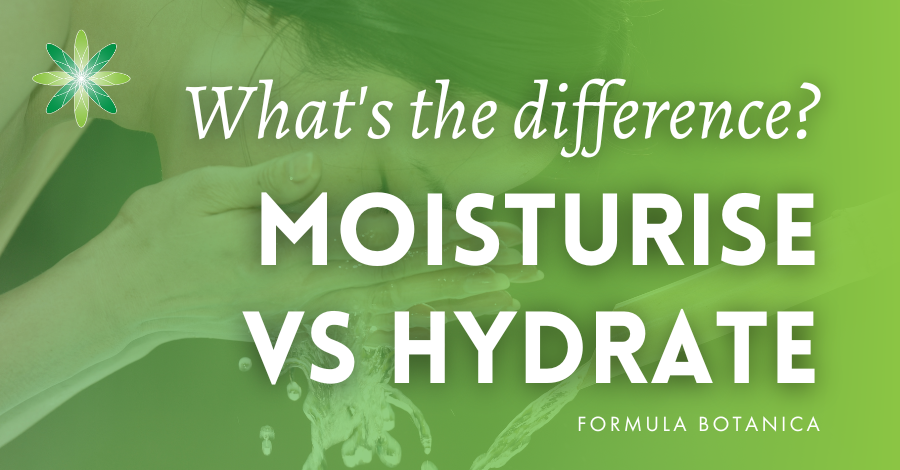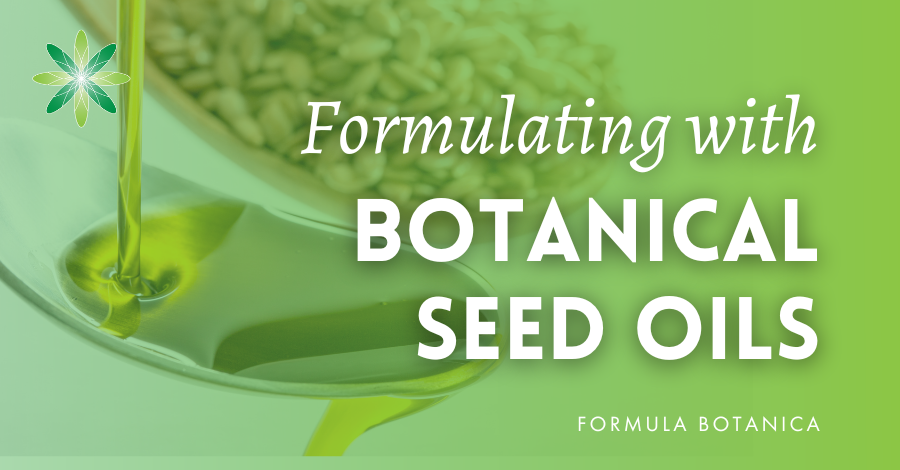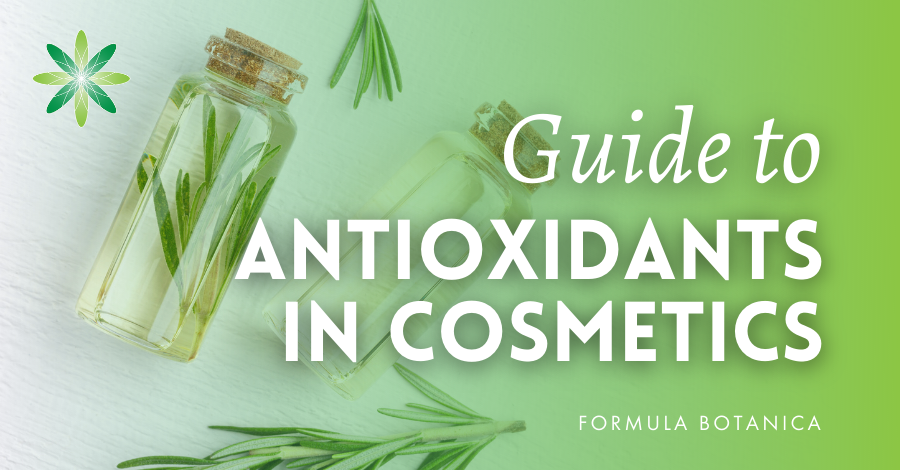At Formula Botanica, we pride ourselves on staying ahead of beauty trends—and often predicting them. Last year, our 2024 predictions made waves in the industry, and this year is no different. As the world’s leading online formulation school, we’re committed to keeping you ahead of the curve. That’s why we’ve done the research for you and put together an exclusive list of the top 10 predicted cosmetic ingredients for 2025.
Whether you’re just starting out or already a seasoned formulator, these natural ingredients will help you create innovative and effective products. Ready to explore the future of formulation and boost your formulation skills? Let’s get started!
Why formulate with trending ingredients
Before we dive into our list of the top 10 ingredients for 2025, let’s take a moment to discuss why you should be formulating with trending ingredients.
As a formulator, staying on top of trends is crucial. Whether you’re just starting out or already have years of experience, knowing which ingredients are trending allows you to create innovative and effective products. It also keeps you aligned with the latest industry innovations and helps you sharpen your formulation skills.
Plus, if you’re planning to launch your own beauty brand—as so many of our students do—it’s crucial to stay ahead of the curve!
If you’re eager to stay ahead of beauty trends and refine your formulation skills, why not check out the Lab at Formula Botanica? Our exclusive CPD membership site has plenty of resources to help you grow as a formulator and stay at the forefront of the industry!
Top 10 cosmetic ingredients for 2025
And now, the moment you’ve been waiting for – our big ingredient reveal for 2025!
These 10 ingredients are perfect for both skincare and haircare formulations. Whether you’re just starting out or have years of experience, there’s something here for every formulator. Ready to discover your next favourite ingredient? Let’s jump in!
1. Shea butter
INCI: Butyrospermum Parkii Butter
First on our list of the top 10 predicted cosmetic ingredients for 2025 is shea butter. Chances are you’re already familiar with shea, as it’s often one of the first ingredients you learn to formulate with. But in 2025, shea butter is expected to be especially trending, driven by the growing influence of West African body care in the industry. You can learn more about African beauty below:
10 natural African skincare ingredients
Podcast 65: What Africa can teach the world about green beauty
Shea is a nourishing ingredient with moisturising, anti-inflammatory, and antioxidant properties (i), extracted from the nuts of the Vitellaria paradoxa tree (known as karité in French-speaking regions). It is rich in fatty acids–especially oleic, stearic, linoleic and palmitic acids–as well as unsaponifiable compounds. It is a great emollient that nourishes dry and irritated skin and can help improve elasticity and inflammation. It’s also fantastic for haircare, as it can help repair damage and add shine.
When formulating, add shea butter to your balms, lotions, or creams, making sure to heat and cool it slowly to avoid graininess. For the best quality, always choose ethically sourced shea butter from sustainable cooperatives. You can learn more about shea and its origins, plus how to source it sustainably, below:
15 tips on formulating with shea butter
Episode 29: Talking ethical natural haircare
Podcast 243: Meet the inspirational entrepreneur rebuilding the beauty industry from seed to shelf
We also have plenty of free formulations using shea butter on our blog, so make sure to check them out!
2. Baobab oil
INCI: Adansonia Digitata Seed Oil
Continuing with the African beauty trend, baobab oil is another key ingredient predicted to gain significant popularity in 2025. Known as “the tree of life,” the Baobab tree is native to Africa but also grows in regions like Australia and Madagascar. It is known for its incredible resilience, as it can live for up to thousands of years.
Baobab oil is a great addition to your skincare and haircare formulations for its anti-inflammatory, nourishing, and occlusive properties, as well as its impressive stability profile. Rich in omegas 3, 6, and 9, as well as in vitamins A and E, baobab oil is perfect for nourishing and revitalising your skin and hair.
It is also known to improve the skin’s barrier function (ii) due to its high content of saturated and unsaturated fatty acids. This makes it ideal for dry, mature, sensitive, or acne-prone skin. Try adding baobab oil to your face oils, balms, and body butters.
On the hair front, baobab oil is great for taming split ends and frizzy hair, and improving overall scalp health, leaving your hair silky and nourished. Try using this oil in your conditioners or scalp treatments. You can also find out more about baobab oil below:
We also have many formulations featuring baobab oil on our blog. Check them out here.
3. Camellia oil
INCI: Camellia Japonica Seed Oil or Camellia Oleifera Seed Oil
Next on our list of the top 10 trending ingredients for 2025, we have camellia oil. Originally from China and East Asia, this natural ingredient has been used for over 2,000 years, famously by Geishas to maintain their youthful, dewy complexion. And recently, it’s gained massive popularity on social media. But what makes it so special?
Camellia oil is rich in essential fatty acids like oleic and palmitic acid and packed with vitamins A, D, E, and K. In fact, it’s one of the richest oils in oleic acid. These powerful compounds, combined with squalene and polyphenols, give camellia oil high antioxidant, anti-inflammatory, and moisturising properties (iii), ideal for skincare or haircare formulations.
Camellia oil is also a very stable oil, so you can use it in the heated phase of your formulations. Ready to experiment? Why not make this luxurious cleanser featuring camellia oil:
This oil can also help reduce transepidermal water loss (TEWL) and soothe the skin, helping restore elasticity and keeping the skin hydrated. Even more impressively, research highlights its ability to boost type-1 collagen production and shield it from breakdown (iv). Want to learn more about collagen? Read this post below:
4. Rosemary extract
INCI: Helianthus Annuus Seed Oil (and) Rosmarinus Officinalis Leaf Extract
Rosemary extract is taking the beauty world by storm, especially on TikTok, where rosemary shampoo videos have gone viral with millions of views. With its growing popularity and proven benefits, it’s predicted to be one of the trendiest ingredients of 2025. But why is it so popular?
This herb boasts a rich history stretching back thousands of years. Revered by Ancient Egyptians, Greeks, and Romans for its alleged healing and cosmetic properties, it even appeared on cuneiform tablets as early as 5000 BC. The Romans likely introduced rosemary to Northern Europe, where it quickly became a cornerstone of beauty and wellness traditions. Curious to explore the captivating history of this ancient herb? Listen to the podcast episode below:
Podcast 174: Beauty wisdom: ancient herbs in modern skincare
Rosemary continues to shine in the modern world for its powerful antioxidant, anti-inflammatory, and antimicrobial properties (v). Its antioxidant properties help protect skin and hair from free radical damage while soothing irritated scalps. Plus, its natural astringent qualities make it ideal for toning the skin and controlling excess oil on the scalp. You can learn more about the properties and benefits of rosemary below:
Rosemary: The formulator’s secret cosmetic ingredient
Try adding rosemary essential oil, CO2 extract, or hydrosol to your skincare or haircare formulations. You could for example incorporate it into your cleansers, creams, toners, body balms, shampoos, conditioners, and scalp oils. Ready to get started? Here are a few easy formulas for you to try:
How to make a natural shampoo with mint & rosemary
Revitalise your locks: how to make a rosemary scalp and hair oil
5. Pomegranate extract
INCI: Punica Granatum Seed Extract
Next up on our list of the top 10 ingredients for 2025, we have pomegranate extract. If you’ve never formulated with pomegranate before, let me tell you, you’re missing out.
Pomegranate is a standout ingredient, packed with polyphenols like ellagic acid that protect the skin from free radical damage and help reduce hyperpigmentation (vi). Its potent anti-inflammatory and antimicrobial properties also make it a go-to for soothing irritated, sensitive, or acne-prone skin.
Pomegranate seed oil is also notable for its punicic acid content, a rare omega-5 fatty acid that soothes and regenerates the skin, making it perfect for mature and sensitive skin formulations. It’s also great for after-sun products.
Try adding the seed oil, CO2 extract, or glycerite to your balms, masks or serums. Even a small amount can make a difference! Find out more about pomegranate and its antioxidant properties below:
The formulator’s guide to antioxidants in cosmetics
6. Ginseng extract
INCI: Panax Ginseng Root Extract
Next up on our list is ginseng extract. If you haven’t formulated with this natural ingredient yet, it’s time to jump on the adaptogen trend.
A staple of traditional herbal medicine, ginseng has recently gained massive popularity in skincare, thanks to its ability to energise the skin, boost elasticity, and provide a radiant, healthy glow. In recent years, hydrating ginseng toners have become beauty must-haves, helping to balance skin’s pH, slough off dead skin cells, and even out skin tone, but ginseng has been used for thousands of years as a herbal remedy:
Podcast 173: Unveiling ancient wisdom: The power of Asian herbs with Dr Jenelle Kim
The magic of ginseng lies in its active compounds, like ginsenosides and the newly discovered gintonin. Gintonin, a glycolipoprotein, is a game-changer for skin health. According to recent studies (vii), it could help stimulate skin cell proliferation and collagen production, while stimulating the release of hyaluronic acid and collagen from fibroblasts, for deep hydration and skin elasticity. Ginseng can also inhibit melanin production, so I would only recommend it to more advanced formulators.
Try adding ginseng extract to your anti-ageing or brightening formulations, from toners to creams to facial polishes. You might also enjoy this free formulation with Siberian ginseng:
7. Tranexamic acid
INCI: Tranexamic Acid
Next up on our list of the top ingredients for 2025 is tranexamic acid. If you’re looking for a cosmetic ingredient to tackle dark spots and uneven skin tone, look no further. Tranexamic acid is being hailed as a modern alternative to hydroquinone, with none of the drawbacks.
Originally developed in the 1960s as a medical treatment to reduce bleeding, tranexamic acid has recently made a splash in skincare, becoming a go-to for addressing pigmentation issues. Social media is abuzz with its benefits, with TikTok influencers and dermatologists singing its praises for treating melasma, post-inflammatory hyperpigmentation, and sun damage (viii).
But how does it work? Well, tranexamic acid works by inhibiting melanin production, helping fade dark spots and brighten the complexion. Unlike exfoliating acids, it’s gentle on the skin and safe for all skin types, including sensitive and mature skin. Its anti-inflammatory properties also make it a good choice for products targeting acne scars or skin conditions (just be careful with medical claims).
You can add tranexamic acid to your creams, serums, and gels for fast-acting, visible results. However, bear in mind that it is considered a synthetic ingredient and is not beginner-friendly.
8. Vitamin E
INCI: Tocopherol
Vitamin E earns a well-deserved spot on our list of the top ingredients for 2025. Chances are, you’ve already formulated with this ingredient before. But what makes vitamin E a standout?
This vitamin is famous for its exceptional antioxidant properties, which help protect the skin from oxidative stress caused by free radicals, UV rays, and pollution (ix). This not only helps prevent premature ageing but also promotes healthier, resilient skin.
But vitamin E’s benefits go beyond skincare or haircare—it’s also a functional hero in your formulations. By preventing rancidity in oils and butters, vitamin E extends the shelf life of oil-based products, ensuring your creations stay good longer. Find out more about ingredient categories below:
Natural formulation 101: Beginner’s guide to skincare ingredients
Add vitamin E during the cool-down phase of your anhydrous (oil-based) formulations and store it in a cool, dark place. Ready to get hands-on? Try our free high-performance vitamin E serum formulation. We have many more free formulations on our blog that use vitamin E, so make sure to check them out as well.
You can also take a step further and check out our Antioxidant Mini Lab on our exclusive membership site, the Lab at Formula Botanica.
9. CycloRetin
INCI: Pseudostellaria Heterophylla Extract (and) Glycerin (and) Water
As you may already know, retinol alternatives are incredibly popular right now, and CycloRetin is rapidly becoming a standout in this space. In 2024, retinol alternatives topped search trends on Covalo (a popular search engine), and the momentum shows no sign of slowing. And with stricter EU regulations limiting retinol use and growing consumer demand for gentler, natural solutions, CycloRetin is set to shine. But what is it exactly?
CycloRetin is a natural active ingredient extracted from Prince Ginseng, a plant prized in China for its adaptogenic properties. This innovative ingredient contains heterophyllin B, a cyclic peptide with powerful anti-ageing effects. According to the manufacturer, CycloRetin could help boost collagen production and strengthen the skin’s matrix, reducing wrinkles and sagging while improving firmness and luminosity—all without the irritation associated with synthetic retinoids. You can learn more about retinoids and retinol below:
Top 5 natural retinol alternatives and why you should use them
But what truly sets CycloRetin apart is its versatility and stability. Unlike retinol, it doesn’t cause photosensitivity and can be used both day and night, even by those with sensitive skin. CycloRetin supposedly also works faster than many retinol alternatives, showing visible results in as little as 14 days. It’s water-soluble, highly stable, and effective at low concentrations, making it ideal for your gels, serums, creams and lotions.
Want to dive deeper into the world of retinol alternatives? Check out our Mini Labs on Bakuchiol and Retinol Alternatives.
10. Bioferments
INCI: Various
Last but not certainly not least on our list of the top 10 ingredients for 2025 are bioferments (aka fermented ingredients). Bioferments are taking over the skincare and haircare world, and they’re here to stay. In fact, you may already be using them without even realising it!
These natural ingredients, made by microorganisms like yeast and bacteria, have been rising in popularity since 2018. Xanthan gum, squalane, lactic acid, and kojic acid are all products of fermentation, and let’s not forget rice water, which is becoming a major trend in skincare and haircare.
Why the hype? Fermentation unlocks bioactive compounds and breaks down larger molecules, making ingredients more potent and easier for your skin to absorb. This process not only enhances the concentration of nutrients and antioxidants but is also believed to support a balanced, healthy skin microbiome. Curious to learn more? Listen to these podcast episodes:
To make the most of fermented ingredients, add them to the cool-down phase of your formulations, whether in your cleansers, moisturisers, or serums.
Want to dive deeper into this trending ingredient? Check out our Fermented Ingredients Mini Lab for more!
Learn how to formulate with trending ingredients
I hope you enjoyed this post about the top 10 trending ingredients for 2025! While there are so many more ingredients we could have covered, these are certainly the ones making waves. Which ingredient stood out to you the most? Let us know in the comments below!
Right now, you’re probably eager to start formulating with these ingredients. So why not try our free mini-course and kickstart your formulation journey today? Learn how to formulate natural skincare from home and become a skilled cosmetic formulator.
If you already are a formulator, you can check out out our exclusive membership site, the Lab at Formula Botanica to continuously improve your formulation skills and stay ahead of beauty trends. You can find out more about the Lab below:
The Lab at Formula Botanica
Why the Lab’s CPD is a game-changer for natural formulators
References & further reading
(i) Lin et al, 2017. Anti-inflammatory and skin barrier repair effects of topical application of some plant oils
(ii) M. Komane et al, 2017. Beauty in baobab: A pilot study of the safety and efficacy of Adansonia digitata seed oil
(iii) Zhou et al, 2024. The antioxidant, anti-inflammatory and moisturizing effects of camellia oleifera oil and its potential applications
(iv) Jung et al, 2007. Effect of Camellia japonica oil on human type I procollagen production and skin barrier function
(v) Malvezzi de Macedo et al, 2020. Rosemary (Rosmarinus officinalis L., syn Salvia rosmarinus Spenn.) and its topical applications: A review
(vi) Dimitrijevic et al, 2024. Punica granatum L. (Pomegranate) extracts and their effects on healthy and diseased skin
(vii) Kim et al, 2024. Ginseng and ginseng byproducts for skincare and skin health
(viii) Gaćina et al, 2023. The use of tranexamic acid in dermatology
(ix) M. Fiume et al, 2018. Safety assessment of tocopherols and tocotrienols as used in cosmetics
FREE TRAINING
Learn how to become an
Organic Skincare Formulator
FREE TRAINING
How to become an
Organic Skincare Entrepreneur
FREE TRAINING
How to become an
Organic Skincare Entrepreneur
Leave us a comment

Ariane is Formula Botanica’s Content Creator and an active member of the student community. She has worked as a professional journalist, blogger, copywriter and editor before joining Formula Botanica full-time in 2024.

